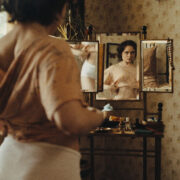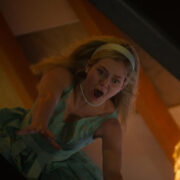How To Watch A Film: Cinema & The Suspension Of Disbelief
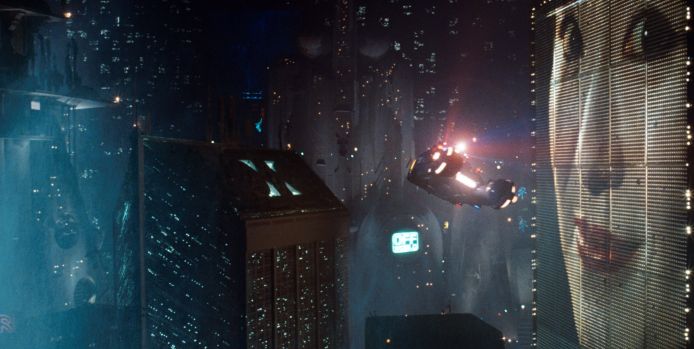
I love film, more than people probably, and I will…
The ‘Suspension Of Disbelief’ is an important factor in the consumption of art, any sort of art. Whenever we are presented with a vision of the fictional world our enjoyment of it rests on us deciding for one moment to accept it as realistic fact. For example, we all know a time-travelling DeLorean is frankly impossible, but if we were to spend the entire of Back To The Future considering how highly unlikely Marty’s adventure was, well, then we would not get swept into the story, and would certainly not enjoy ourselves as much.
Now, while lots of elements can impede our suspension of disbelief: bad acting, bad dialogue, boom mikes dropping into shot, the majority of factors that interfere with our fantasy experience are those entirely of our own making. For instance, the copy of the film itself can be problematic. Would you believe me if I told you had never seen the original Back To The Future? Probably not. But unless you had the benefit of seeing it in the cinema on release in 1985 or actually own a DVD or Blu-Ray copy today you’ve never seen it.
While digital remasters mean that televised versions of films are less problematic these days, there are still a number of issues to contend with. The Back To The Future you’ve seen was probably ‘panned & scanned’ for TV and video release, in other words the film image was stretched out and the sides were chopped off to fit a modern TV screen. The version you’ve seen may also have been edited for bad language and ‘naughty scenes’. More than that, the version you’ve seen has probably been edited for time; small infinitesimal pieces have been chipped out of the narrative of the original film. But how are you to know?
Even when you do have an original, digitally remastered film copy to hand, a number of external factors can effect your film watching experience. Where are you? Is there sunlight coming through the windows? Do you have noisy housemates? Is your phone beeping with text alerts? There are even factors of your own choosing which might also be distracting you from the film, and the potential of this fantasy experience: Have you eaten, are you ordering pizza? Eating pizza? Are you tweeting?
I know what you’re thinking: Why does any of this matter? Maybe you can eat or text in front of the TV and easily enjoy a film. People do. But the thing is this, to watch a film is to engage in a fantasy experience. To properly enter into this experience you have to cut yourself off from the real world, you have to suspend your disbelief. So consider that there is a better way to watch a film and follow my advice below.
1. Watch An Original Copy
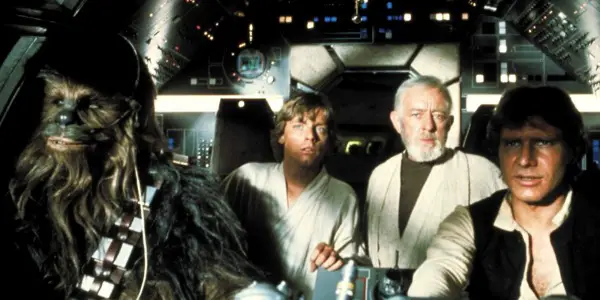
If you can’t see a film in the cinema then at least get yourself a good DVD or Blu-Ray copy. There are many reasons for this. Firstly, you’ll avoid our old friend the ‘pan & scan’. Luckily with videos long gone and TV resorting to digital remasters this is no longer such an issue. But you’ll also be able to see the film in the aspect ratio (the shape of the image) decided on by the filmmakers’ (if it still looks a bit odd then check the aspect ratio settings on your TV). Secondly, you’ll know it hasn’t been edited for sex, language and violence. Not that you need all this stuff but if the filmmakers put it there then that’s where it should stay. Also, you’ll know the film hasn’t been edited for time and you won’t have to deal with annoying adverts or pop-up trailers for the next TV show.
Alas, even if you do own a digitally remastered DVD or Blu-Ray copy, the odds aren’t always in your favour. In the digitally remastering of old films, studios frequently change colours or sounds for the worse. For example, George Lucas has heavily remastered the original Star Wars films, something fans have not taken lightly. Groups across the world are currently piecing together fragments of cinema reels and VHS copies in hopes of rediscovering the original look. These are known as ‘despecialised’ versions.
You’ll also find that there are differences between cinema versions and DVD versions. The octopus scene in The Goonies fell foul of this. The scene appeared in the cinema edition but was quickly chopped out by filmmakers who thought it looked too fake. Luckily you can see this scene in the extras on The Goonies DVD.
Also, do try to watch original copies as much as possible. Sorry to sound like an anti-piracy trailer but the film industry is kept alive by us paying for the intellectual property on offer to us, so do try and avoid the illegal copies.
2. Watch It On A Big Screen
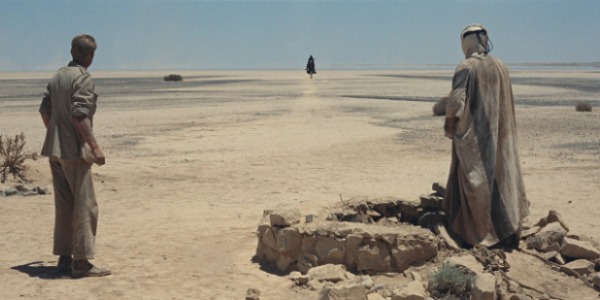
These days, film is an entertainment product available on a number of platforms. You can watch a film on a TV, a laptop, a tablet, an iPod. Desperate times call for desperate measures and sometimes you really want to watch a film but aren’t in the most habitable of environments, and I won’t begrudge you watching a film on a laptop on a train, in a hotel room etc. But if you can, do try and watch it on a big screen in the comfort of your home.
The reasons for this are as follows. The cinema screen is the size and shape that it is because it is attempting to fill your vision, and cut you off from anything that could interfere with your focus on the film itself. If you watch a film on a small screen, you’ll never properly cut yourself off from your environment and relax into the experience. Added to this is the problem of aspect ratio. Being now more aware of film quality, but not yet in a culture of widescreen TVs, the film industry retains the film’s original aspect ratio by presenting a smaller, letterbox type image. And if you watch an original film version on a small screen, those thick black lines are going to make the image smaller still.
Apart from the obvious downsides of small screens there is the loss of sound. Depth of sound is something that was also lost when films were transferred to video and you’ll find that the soundtracks of many films when seen on DVD will appear richer and more complex. You only have to watch Twister on Blu-Ray to realise what has been lost on video. The benefit of this brave new world of TV technology is many people can afford a big screen TV, and with that comes a serviceable sound system. But, if you tend to watch films a lot on trains and such, at least get yourself a good pair of headphones.
3). Dark & Quiet

You’ve probably learnt enough from bad cinema visits to know that extraneous noise is really off-putting when it comes to watching a film. Luckily you only have to worry about the odd person in the cinema. In the comfort of your own home, unfortunately, you have to contend with myriad noises. Everything from car noises, to lawn mowers, to arguing neighbours can distract you from properly engaging in a film. So try to watch a film in as quiet an environment (or time of day) as possible.
I know what you’re thinking: Why not just turn up the volume? It’s true that a high volume, which blocks out the noise of your environment (as in the cinema), will add to your film watching experience. But sound is a very personal thing. Besides the people you are sharing the film-watching experience with, you have to think about other people in your home, or even neighbours. So be responsible with that volume button.
But the element of paramount importance is that you watch a film in as dim or dark a setting as possible. Like the way cinema screens are meant to fill our vision, so are cinemas dark to make sure we are not distracted. Even if there are no shiny objects to distract you, bright light can be a distraction in itself. So, go old school, and draw the curtains like when you were a kid. And, on a personal note, if you’re going to watch a horror, watch it late at night. Give the film its best chance to scare you.
4. No Eating!
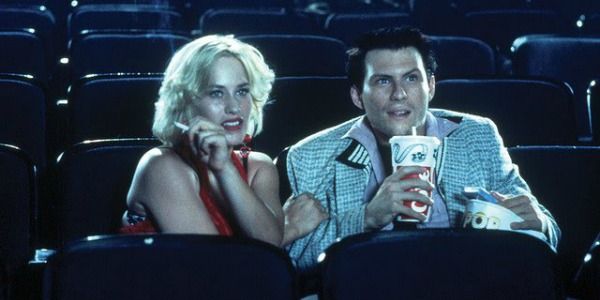
While in the cinema, your noisy eating can bring you looks of disdain, at home it will only serve to distract you from the film. Conversely, you’re actually likely to overeat when you’re distracted, so if the film turns out to be really good you might just eat yourself ill. But, like with all these rules, we can’t always stick to them. Sometimes you’ve missed lunch but really want to watch this one film, and this is the only moment you have to watch it in. Honestly, I’ve done it too. I just try to eat within the first ten minutes. But seriously though, keep an eye on those snack foods, the obesity crisis is looming large.
5. NO SOCIAL NETWORKING!
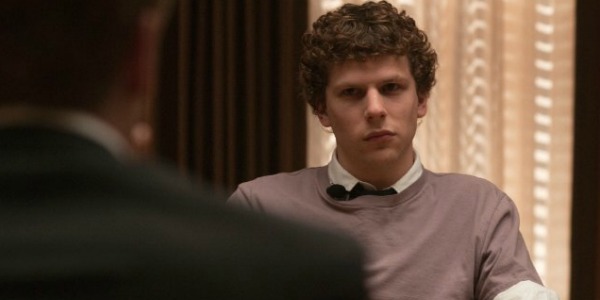
The reasons for this are two fold. Firstly, you’re not doing yourself any favours. You’re distracting yourself from the film and missing important parts of the narrative. Also, I know you might just be doing it because you’re bored but there is the consideration that you just haven’t allowed the film time to properly engage you. Most importantly, your play-by-play critique of a film might be annoying other people.
You could be giving away parts of the story, or just generally clogging up people’s newsfeeds with things they already know. Furthermore, if you’re on social networks while at the actual cinema then you are probably annoying other people with the glare of your smart phone and that’s just not fair. Although, sure, it is acceptable to use it as torch to find your seat or help a friend find their way back to you in the dark.
Conclusion
The suspension of disbelief is a powerful thing, it sets your brain on a journey to engage with the most fantastical of subjects, stories or worlds, and ones that you could have never imagined on your own. To deny yourself that suspension of disbelief is to deny yourself the full experience of a film.
The reason why cinema screens are wide, that cinemas are so dark, the sound so loud, and the public dismay at extraneous sound so great is that cinemas were designed to show films at their best. Their best being in a state on which the filmmakers decided, and in an environment designed to shut you off from your senses and any external distractions, and push you headlong into a fantasy world.

Outside of the cinema, it is our responsibility to uphold the importance of the suspension of disbelief, and give a film its fighting chance. I know that, for many of you, the idea of following the above points is not feasible. Life gets in the way and you can’t always watch a film in that perfect environment, you might not even want to. It’s Saturday night and all you want to do is watch a comedy and eat pizza with your friends and I get that.
But if a film is truly important to you then give it the chance that you think it deserves. We can’t control what goes on in a film itself but we can control how we experience it. And while the perfect environment might not always be possible, give it your own best shot. If that shot happens to include watching Twister on Blu-Ray, as neighbours chatter in the sunshine, and while your dog barks at the flying cow, then so be it.
If I have ignited your interest then I can thoroughly recommend some excellent visual guides on this subject. See how a despecialised version of Return Of The Jedi stacks up against the Blu-Ray. Watch this excellent short that features some of the greatest filmmakers of our time explaining the method behind pan & scan. And finally, see what you’re missing out on when you watch a pan & scan version of Blade Runner.
What are your film experiences? What’s ruined a film for you? Have you ever watched a film on DVD, only to discover new scenes you hadn’t seen on TV?
(top image: Blade Runner – source: Warner Brothers)
Does content like this matter to you?
Become a Member and support film journalism. Unlock access to all of Film Inquiry`s great articles. Join a community of like-minded readers who are passionate about cinema - get access to our private members Network, give back to independent filmmakers, and more.
I love film, more than people probably, and I will watch pretty much anything. Seriously, anything! I have a postgraduate education in film & have spent an exceptionally long time trying to get inside the film industry. I'm a big believer in treating every film the same, and bringing something new to the film theory table, giving reasons for every argument made. You'll find that I'm an empathetic and fun sort of reviewer, at least, I like to think so. If I'm not watching films I'm doing exceptionally nerdy stuff, like watching documentaries about the history of medicine and collecting photos of old post boxes.











